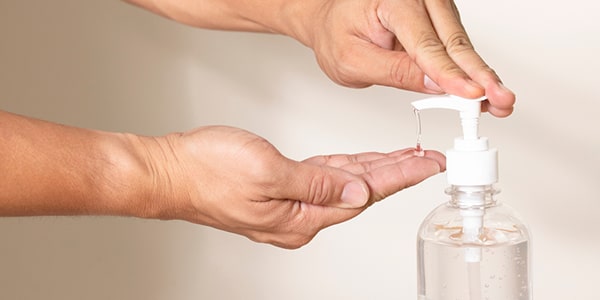- 24/03/2023
- Author
Starting a hand sanitizer product business can be profitable due to the high demand for hand sanitizers during the COVID-19 pandemic and increased awareness of hand hygiene. The market for hand sanitizers has expanded, providing a lucrative opportunity for entrepreneurs who can meet the growing demand.
To start a Hand Sanitizer Product Business, research and understand the market, develop a business plan, obtain necessary licenses and permits, choose a supplier, create a production plan, create a brand and packaging, market your product, and launch your product.

It requires hard work, dedication, and commitment, but with the right approach and mindset, you can build a successful business that helps people stay healthy and safe.
Starting a hand sanitizer product business involves several steps:
1. Conduct Market Research:
To conduct market research for a hand sanitizer product business, you need to identify your target market, analyze the competition, determine the demand, analyze pricing, identify distribution channels, and research potential suppliers. By understanding your potential customers, competition, and market demand, you can identify the optimal price point for your product and determine the most effective distribution channels.
Additionally, research on potential suppliers and raw materials can help you create a cost-effective and high-quality product. Conducting thorough market research is crucial to making informed decisions about your business strategy and increasing your chances of success in the hand sanitizer product market.
2. Obtain necessary Licenses and Permits:
To start a hand sanitizer business, you may need to obtain various licenses and permits, depending on your location and the regulations of your local government. These may include a business license, manufacturing license, sales tax permit, and hazardous materials permit.
To obtain these licenses and permits, you should contact your local government’s business registration office or the department of licensing and regulatory affairs. The application process may involve filling out forms, paying fees, and providing additional documentation, such as insurance and health and safety certifications.
It’s important to comply with all necessary licenses and permits to avoid legal issues and ensure the safety and quality of your product.
3. Develop a Business Plan:
To develop a business plan for a hand sanitizer product, you need to start by creating an executive summary that outlines your business goals, target market, products, and financial projections. Next, conduct market research to analyze the competition, determine the demand, and identify your target market. Once you have a clear understanding of the market, describe your hand sanitizer product, marketing and sales strategies, and financial projections.
Develop an operations plan that outlines the production processes, quality control measures, and supply chain management. Finally, describe your management structure and staffing needs, identify potential risks and challenges, and develop strategies to mitigate them. A comprehensive business plan will help you make informed decisions and increase your chances of success.
4. Determine your Product Line and Formulation:
Determining your product line and formulation for a hand sanitizer business is crucial for ensuring the quality, safety, and effectiveness of your product, as well as its appeal to your target market. The formulation of your hand sanitizer will determine the type of ingredients, the concentration of active ingredients, and product properties such as fragrance and texture. Your product line should meet the needs and preferences of your target market, which may include variations such as scented or unscented, moisturizing, or portable.
To determine your product line and formulation, conduct market research, consult with experts in the field, and experiment with different formulations and variations. Developing a high-quality product that meets the needs of your target market will help your hand sanitizer business succeed in a competitive market.
5. Establish Manufacturing Facility:
To establish a manufacturing facility for a hand sanitizer product business, you should first identify a suitable location, obtain necessary licenses and permits, develop a production plan, acquire equipment and raw materials, hire skilled staff, implement safety measures, test the product for quality control, and establish distribution channels.
It’s crucial to ensure that the production process meets safety and quality standards, complies with regulatory requirements, and creates a safe working environment for employees. By following these steps, you can set up an efficient and safe manufacturing facility for your hand sanitizer product business, and ensure that your product meets the needs of your customers.
6. Develop Distribution Strategy:
Developing a distribution strategy is critical for a hand sanitizer business to ensure that its product is effectively and efficiently reaching its target market. The steps for developing a distribution strategy include identifying the target market, choosing distribution channels, creating a distribution network, optimizing logistics, and developing marketing and sales strategies.
A distribution strategy can improve sales, brand awareness, and customer satisfaction. By understanding the target market and optimizing logistics, the business can ensure that its product is reaching customers through the most effective and cost-efficient channels.
Therefore, developing a well-executed distribution strategy is essential for the success of the hand sanitizer business.
7. Adhere to Safety and Quality Standards:
Adhering to safety and quality standards is essential for a hand sanitizer business to protect customers, comply with regulations, maintain a brand reputation, and ensure the safety of employees. Hand sanitizers are regulated by government agencies such as the FDA, and failure to comply with safety and quality standards can result in fines or other legal consequences.
Poor quality or unsafe products can damage a brand’s reputation, leading to a loss of customers and revenue. By adhering to safety standards, the business can ensure that its customers are protected from potential harm and that employees who handle the product during the manufacturing process are also safe.
Conclusion
Starting a Hand Sanitizer Business can be a profitable venture if approached with a well-thought-out plan. BO international can prove very helpful and efficient in manufacturing hand sanitizer products to establish a successful full business. The third-party private manufacturing company uses authentic ingredients, welcomes customization, and manufactures the products in bulk which reduces the COP and increases profit for the company.
BO international maintains all the standards and licenses for the manufacturing process. This can help entrepreneurs to create a successful hand sanitizer business that caters to the needs of their target market.




